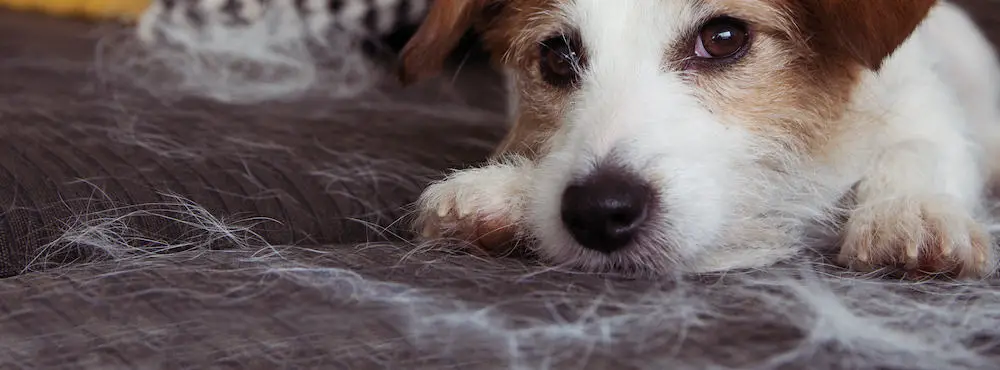Pets are messy, and anyone who has ever owned a pet knows the challenges of keeping a pet home clean. In this article, we explain the biggest cleaning problems pet owners face and also why you should keep up with cleaning (it’s not just for convenience).
And for those who hate the mess the pets make – we explain how you can keep your home fresh and clean without feeling like it’s a full-time job.
The Biggest Cleaning Problems Pets Cause According to Pet Owners
Getting a pet will inevitably mean more cleaning. Even if your pet is one of those breeds that don’t really shed hair, there is always the possibility of urine accidents, and at least you have to clean their beds, bowls, and other pet stuff. Let’s look at some of the biggest cleaning problems pet owners have:
#1. The Problem of Pet Hair
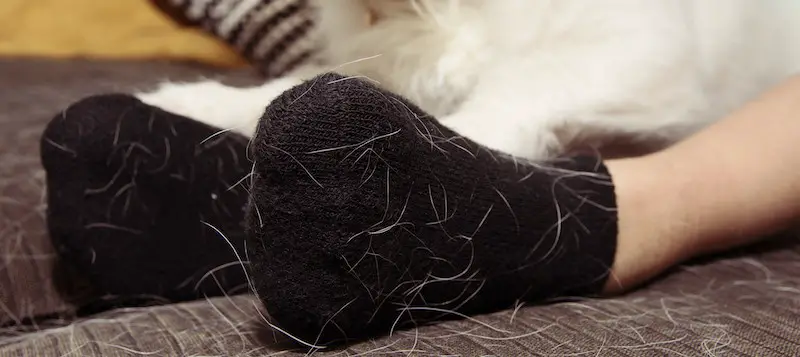
If your pet is a furry one and of the shedding kind, you’ll probably name pet hair as your biggest pet-related cleaning problem (5). Especially many cats and dogs shed a lot, and very heavily during shedding season in the fall and spring.
It makes your home look untidy, spreads dander, and gives your house that musty pet smell.
All that pet hair gathers on your floor, carpets, furniture, clothes… basically, everywhere you can think of. It makes your home look untidy, spreads dander, and gives your house that musty pet smell.
When it comes to cleaning, it actually doesn't matter whether the hair fell off a cat or a dog. The type of hair is what's important.
Long, silky, coarse, short, and needle-like hairs can all be challenging to clean up. Long hair wraps around brush rolls while needle-like hair embeds in certain kinds of fabrics. Most types of pet hair prove a challenge for cleaning tools, but in the end, it's the amount that matters most. A heavy-shedding pet is always more difficult to clean after than a low-shedding one.
Pets won’t stop shedding because it’s their natural way of renewing their coat, so you have to find a way to deal with it. Vacuum cleaners are the perfect tool for pet hair in your home; you just need to find the right type and model for your needs. Also, you need to have a vacuum that actually picks up pet hair, as not all vacuums are efficient at the job.
Below are our top 3 best handheld vaccums we picked out for our readers.
Pro Tip:
Pet hair gets everywhere. If you seriously want to eliminate pet hair from your home, you should have a few different tools for different surfaces and occasions.
#2. Pet Stains
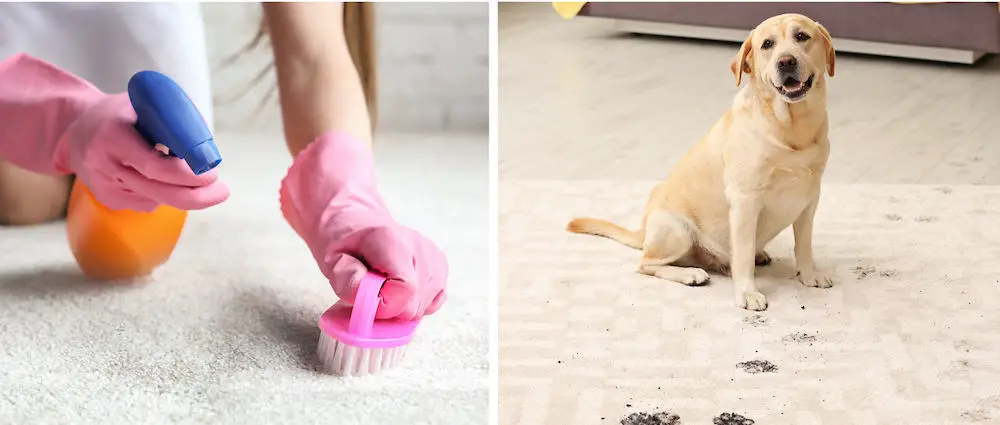
Pet-related stains are another common cleaning problem in pet homes. With small puppies, you can expect months of urine accidents happening inside, cats can mark their territory eagerly, and there is always occasional diarrhea or vomit that needs to be cleaned up.
You may find drool stains on your couch, muddy paw prints on the floors and rugs, and stains from water and food spills in the kitchen.
Want it or not, these are things you probably have to deal with if you own a pet.
However, it’s not as bad as it sounds if you have the right cleaning gear. Again, with some good tools, cleaning solutions, tips, and routines, you can keep your home spotless even with pets causing all this havoc.
Having a carpet cleaner at hand is always a smart idea, as is a bottle of enzyme cleaner. And always try to clean up the mess before it has a chance to dry up and settle. Especially cat urine is hard to clean later on (6.), so it’s better to have the ideal gear at hand and be ready to act when there’s a pet-related stain that needs cleaning up.
Pro Tip:
The problem with pet-related stains like these is that they need to be cleaned up asap. If you let them sit, they will only seep deeper into the surface and be more difficult to remove later on. It may even damage the floor underneath if accidents like these are not thoroughly cleaned up.
#3. Pet Smells
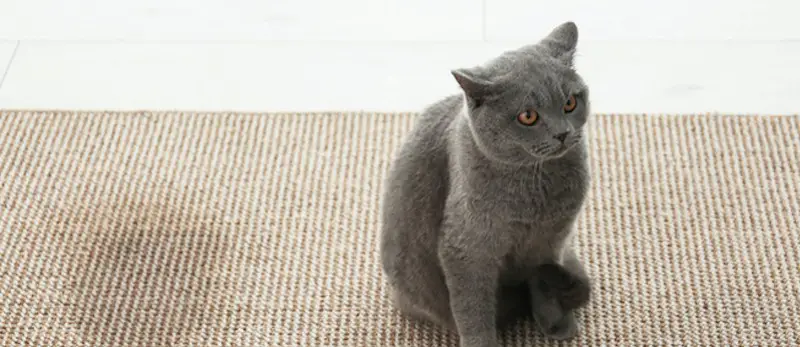
We all know the smell of pets that you get a waft of the minute a pet owner opens their front door to let you in. And as a pet owner, you wouldn’t want to be that person; you’d rather have that rare pet home that smells crisp and fresh.
That pet smell comes from not cleaning up after your pets (or not cleaning your pet)
That pet smell comes from not cleaning up after your pets (or not cleaning your pet). Pet hair everywhere, pet stains that haven’t been cleaned up thoroughly, pet food not stored in an airtight container – the odor is a mixture of several pet-related problems. Also, maybe your cat or dog didn’t have a bath in a while, you haven’t been keeping the litter box clean, or you’re using cheap cat litter that doesn’t contain the smells.
Most importantly, though, you need to ensure urine, pet poo, and vomit are carefully cleaned if your pet has an accident. Especially urine is very difficult to clean up thoroughly, and if any of it is left behind, it may start to smell later on.
Surfaces like tile are pretty easy to clean since they don’t absorb the smells. Your carpets and rugs are another matter, and so is hardwood floor if the accident isn’t cleaned up immediately. For carpets, we recommend having a carpet cleaner, which enables you to clean carpets and rugs more thoroughly with the suction compared to just spraying a cleaner and blotting up the stain. Wood floors have their own cleaning products, which should be enzyme-based to actually break up the stain and not just mask the smell.
Pro Tip:
Remember to open the windows daily to let fresh air into the house. Also, getting an air purifier with activated carbon filters to remove odors is a good option.
#4. Destructive Behavior: Chewing and Scratching
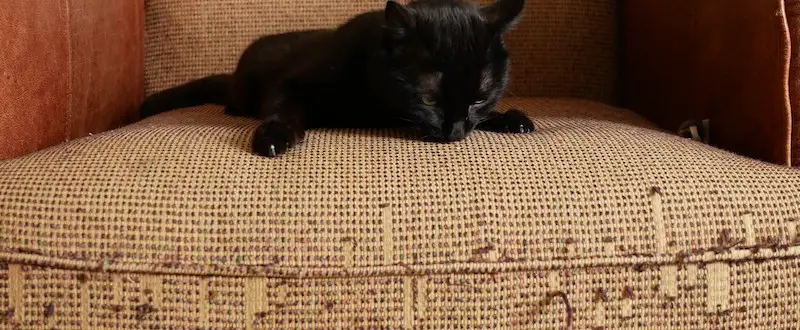
Having a pet may also cause other damage to your home. For example, dogs love to chew, and unfortunately, sometimes their idea of an ideal chew toy is your couch. Cats can also cause destruction by scratching basically everything – except their scratching tree.
It may end up really costly, not just having to replace some household items but also lowering the value of your home.
Cats are much more likely to cause damage to furniture since dogs are often trained as puppies not to do it. Almost one in three cat owners are worried about their cat damaging their furniture, while only 7% of dog owners worry about the same thing (7).
And it’s not only furniture and items like shoes and remotes. Dogs can chew on baseboards, and cats can scratch on doors. It may end up really costly, not just having to replace some household items but also lowering the value of your home.
Your pet is unlikely to stop chewing or scratching, but by providing them appropriate objects and surfaces, such as toys and scratching posts, you can teach your pet where to scratch and what to chew. Also, there are many kinds of solutions, from sprays to door covers, that can help you keep your home intact. You just need to find the ones that work for you and your pet.
Pro Tip:
Choose pet-friendly and durable materials for your home to minimize the destruction caused by your pet.
5. Pet Dander and Saliva: Common Allergens
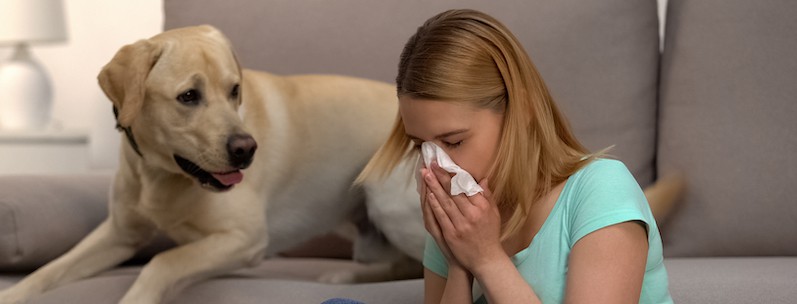
Pets shed not only pet hair but pet dander as well. And that pet dander is one of the leading sources of indoor air pollution (8.).
It’s actually dander people can be allergic to, or to be more specific, a certain protein in the dander. This protein that acts as an allergen can also be found in the pet’s saliva or urine, both of which can also cause symptoms for people that are allergic to animals. (9.)
The best way to minimize allergens in a pet home is to clean, clean, and clean.
In the United States, as many as 3 in ten people with allergies have allergic reactions to cats and dogs, cat allergies being twice as common (10.). Still, many people keep pets, although it means they may have to find ways to cope with allergy symptoms.
The best way to minimize allergens in a pet home is to clean, clean, and clean. Vacuuming, dusting, and mopping will all reduce allergy-causing particles in your home.
Another option is to get an air purifier, which can remove particles from the indoor air, improving air quality and decreasing the number of allergens in the air you breathe (11.).
Pro Tip:
Regular cleaning, proper ventilation, and disposing of dander can improve the indoor air quality as well as decrease any pet-related allergy symptoms.
# 6. Sloppy Drinking and Eating

Feeding your pet can generate a cleaning problem too. Water splashing around, scattered kibble, and chew treats that make a mess. When your pet eats or drinks, it not always very tidy.
Water splashing around, scattered kibble, and chew treats that make a mess.
Luckily, many products will make it easier for you to prevent these messes. Floor covers, splash-free water bowls, and mess-free chews all belong to this category. They can help you avoid a mess and possible damage to floors and furniture.
Good news: You don’t have to live in a messy home!
Although pets can cause a lot of wear and tear in your home, it’s not hopeless. It’s completely possible to live in a clean, fresh, and damage-free home – you just need the right tips, tools, products, and techniques.
- You can take preventative measures and go right to the source by brushing and training your pet. By grooming, you can reduce loose pet hair in your home and minimize your need to clean. You can also train your pet to do their business where they are supposed to, not damage things by chewing, and stay out of certain areas or furniture you want to keep free of pet hair.
- You can also pet-proof your home by using the right kinds of materials that are pet-friendly and repel pet hair or using products like pet blankets and covers to protect your furniture.
- Having the right cleaning gear is, of course, one of the essential factors when it comes to keeping a pet home clean. Using the wrong cleaning solutions may set the stain, making it even more difficult to remove. Or having the wrong type of vacuum and attachments can make vacuuming more time-consuming and difficult than it needs to be
To tackle the various kind of pet messes, you need to have the right cleaning tools and products for different types of cleaning problems - and you need to have them within arms reach.
- Also, having the right tools and products won’t help if you don’t have the right techniques. We have gathered tried and tested cleaning methods against pet-related cleaning problems. Before cleaning comes even a bigger problem, check out our cleaning guides here.

